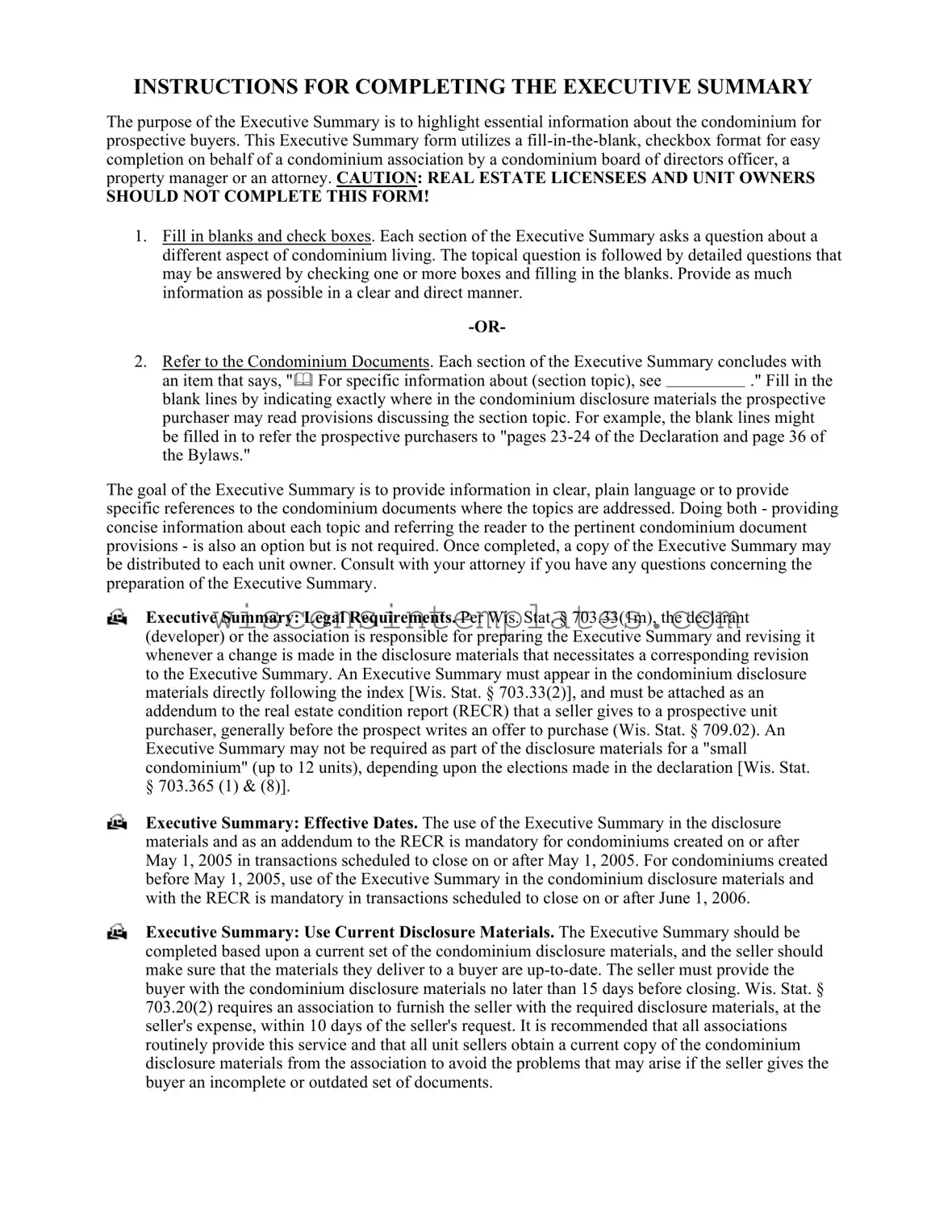The Wisconsin Executive Summary form serves as a vital tool for prospective condominium buyers, summarizing key information about a condominium association. Designed for ease of use, this form employs a fill-in-the-blank and checkbox format that allows board members, property managers, or attorneys to complete it efficiently. However, it is essential to note that real estate licensees and unit owners should refrain from filling out this form. Each section addresses specific questions related to condominium living, covering aspects such as management structure, parking arrangements, pet policies, and maintenance responsibilities. Users can either provide direct answers or refer to specific sections in the condominium disclosure documents for more detailed information. This dual approach ensures that buyers receive clear, concise data while also guiding them to the original documents for further review. Legal requirements dictate that the Executive Summary must be prepared by the declarant or the association and updated whenever there are changes to the disclosure materials. It is also mandated to accompany the real estate condition report when a unit is sold. Understanding the Executive Summary is crucial for both buyers and sellers, as it lays the groundwork for informed decision-making in the condominium purchasing process.
